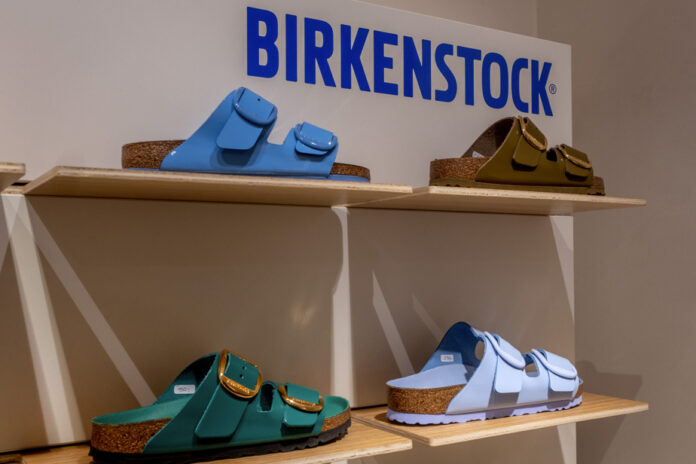(New York) Birkenstock, the German maker of chunky leather-soled sandals, seemed to get off on the wrong foot on Wall Street Wednesday during early trading of its IPO.
The stock with the ticker symbol BIRK was trading well below its IPO price.
Around 1 p.m., the stock was trading at $41.72 (-9.78%) instead of the set IPO price of $46, valuing the company at $8.6 billion.
These disappointing first steps, however, are part of a promising context for the brand of leather sandals which is in the fold of the world leader in luxury LVMH: the sandals with straps and cork soles appeared on Barbie’s feet, in a candy pink, in the blockbuster about the eponymous doll which was featured all summer.
Birkenstock has made $1.11 billion in sales over the past nine months.
“In 2021, private equity firm L. Catterton and Financière Agache acquired a majority stake in Birkenstock, with a view to expanding into the Chinese market,” recalls Michael Hewson of CMC Markets. “Both Financière Agache and L. Catterton are supported by LVMH and its boss Bernard Arnault,” he explains.
The family dynasty remains a shareholder in Birkenstock. The company is still based in Germany and its origins date back to 1774.
The arrival of Birkenstock on Wall Street is a new test for a still recovering IPO market.
Last month, the financial center saw the introduction of three companies even though these operations had been at a standstill for months.
Semiconductor designer Arm led the way, followed by grocery delivery platform Instacart and online marketer Klaviyo.
“An IPO in New York demonstrates global ambitions” for Birkenstock, analysis for AFP Fernando Fastoso, professor of luxury brand management at the German University of Pforzheim.
Beyond Europe and the United States where Birkenstock is well established, China, India, Mexico and Thailand are promising markets.
But turning a German family business into a Wall Street-listed corporation is not without risk.
In the lifestyle and fashion market, “competition is intense, both with established companies and with new players” in a context where consumer budgets are strained by inflation, notes CMC Markets.
Now widely copied, the chunky sole sandal can be found everywhere without it always being clearly identifiable, posing a new challenge for Birkenstock.
And if lovers of luxury products expect a brand to be rare, Birkenstock should opt for a reduction in volumes sold, observes Mr. Fastoso.
By engaging in collaborations with fashion houses like Dior, Givenchy and Céline, the company has already largely begun this shift in recent years.
Of orthopedic origin, the timeless strappy sandal worn by hippies has become a trendy brand, popular at the beach, in the evening or on the catwalks.
The German barefoot has seen it all.
Latest example: the Tokio mules and Milano sandals presented in a palette of sunny colors at the Dior men’s show in June, as part of a new collaboration with the German brand.
“Birkenstock now wants to develop its iconic status to target the growing luxury market around the world,” emphasizes Mr. Fastoso.
“The financial power of LVMH now gives Birkenstock the means to expand its network of distributors around the world,” confirms Marguerite Le Rolland, analyst for the research firm Euromonitor.















